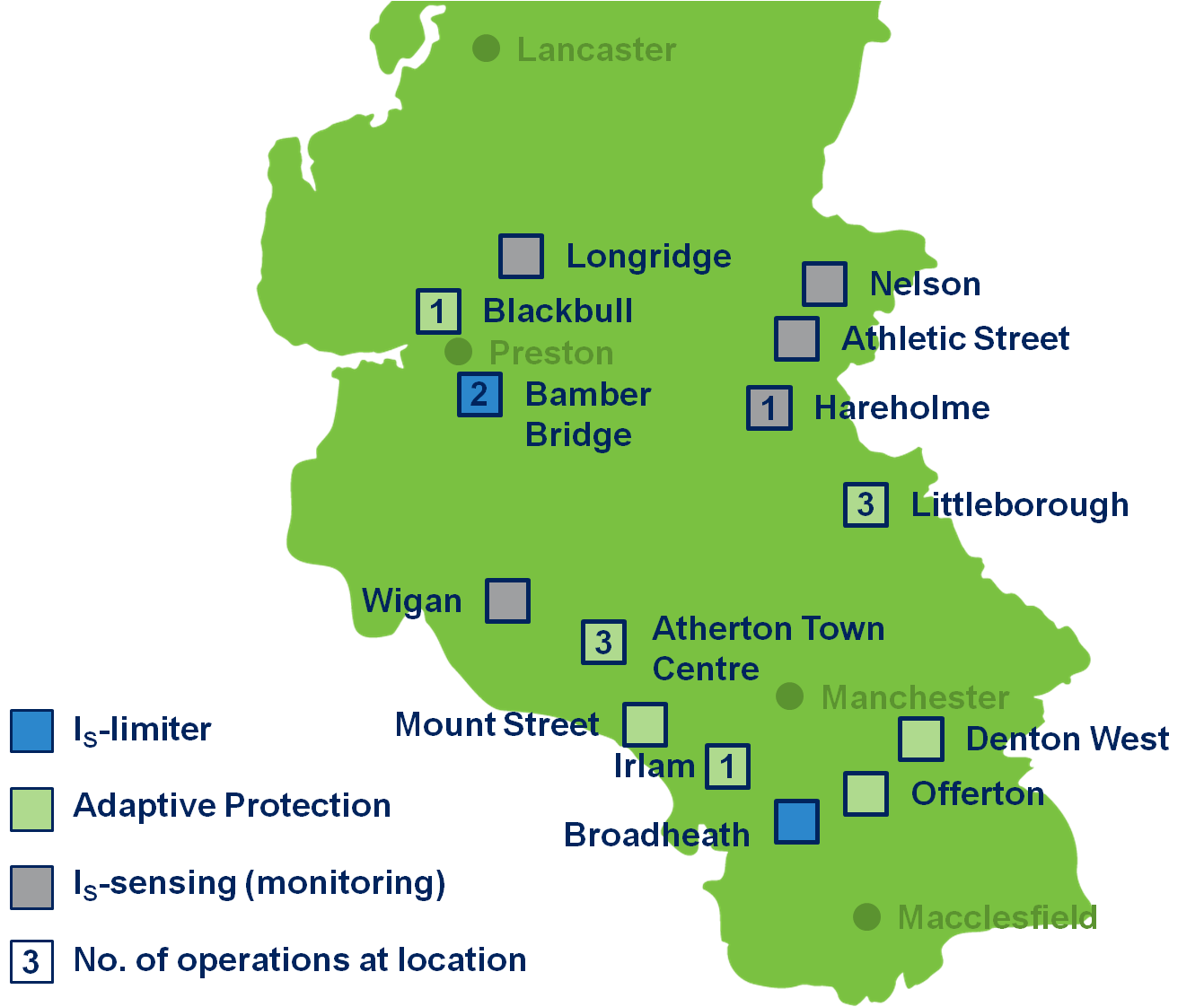Respond trials
Respond trials
Respond’s fault level assessment tool assesses fault level in near real time and enables or disables one of three fault level mitigation techniques.
Adaptive protection
Also known as sequential tripping, this technique re-sequences the operation of circuit breakers and is retrofitted into existing substation equipment.
As part of the Respond trials adaptive protection was installed at five 11kV or 6.6kV high voltage (HV) substations and two 33kV extra high voltage (EHV) substations.
IS-limiter
This current-limiting fuse detects the rapid rise in current when a fault occurs and responds within 1/200th of a second to break the current. The IS-limiter is an existing technology used on private networks in Great Britain and extensively on public networks in Europe, USA and Australia as a fault current mitigation technique.
This is the first installation of an IS-limiter on a distribution network in Great Britain. As part of the Respond project we have demonstrated how these devices can be deployed safely and legally and the benefits they can provide for customers.
IS-limiters were installed at two high voltage substations. Outram fault level monitors were installed at seven sites to validate our network model and the fault level assessment tool.
During the project trials we validated every fault that occurred to ensure that the Respond installations operated correctly. The map below shows where the various technologies were installed on our network and the number of times the technology has operated after a fault.
Reports on each of the faults that occurred can be found on the 'Respond trials key documents' page of our website.
Respond trial sites
Fault current limiting service (FCL service)
This commercial solution provides an opportunity for industrial and commercial demand or generation customers to benefit from selling an FCL service to their local network operator through a managed service agreement.
When a fault occurs, all synchronous rotating equipment, from sources of generation and load connected to the electricity network, contribute to fault current. Using new technology, trialled as part of the Respond project, a customer’s generator or motor can be turned off remotely for a few minutes, so that it no longer contributes to the fault current.
The Respond trials proved the technical feasibility of the service, but an extensive survey carried out with industrial and commercial customers showed there is currently no commercial appetite.
Find out more about our customer engagement activities on the Respond customer engagement page.
